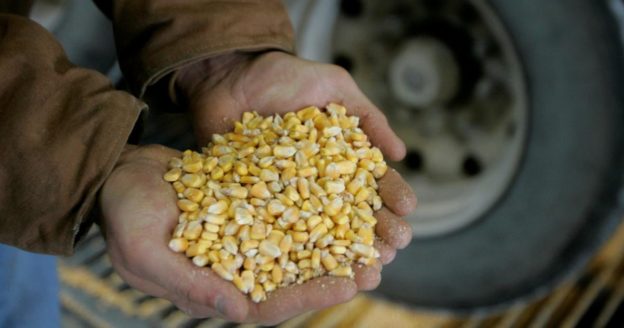In late April, 2020, as the pandemic descended on the US, demand for gasoline crashed to historic lows. Archer Daniels Midland (ADM), the agricultural commodities giant, decided to idle two of the country’s biggest plants producing corn-based ethanol mixed into oil-based fuels to reduce their carbon intensity. ADM’s chief biofuels rival, POET Inc., also shut down several plants. Overall, the bio-fuel accounts for about 10% of every gallon of gas pumped in the US.
A year later, American drivers are back at the gas pump, and ethanol plants are back online. ADM re-opened its plants in early April; POET’s plants re-opened in August 2020 but only hit full production capacity in April. Then, just as ethanol’s road ahead was beginning to look clear, another unanticipated obstacle emerged: the spot price of its key ingredient corn surged to its highest levels in a decade in May.
Between April 1 and May 4, the price of corn jumped 28% to $7.30 per bushel, the biggest monthly gain in a decade. The resurgence of ethanol refining is only part of the reason (30%-40% of US corn ends up as ethanol). An even bigger reason is that corn imports by China are now hitting record highs as the country’s economy recovers from the pandemic.
US farmers, the world’s top corn exporters, won’t begin to harvest until August, and global supplies are already short as as a result of drought conditions in Brazil and Argentina. The price is likely to stay elevated at least through the fall. If summer heatwaves depress the Midwest harvest, said Naomi Blohm, a senior market adviser at Total Farm Marketing, a consulting firm in Wisconsin, prices could climb higher still.
Gasoline demand outweighs high corn pricesFor US farmers, it’s a windfall, Blohm said, especially because the pandemic wiped out two key markets—ethanol and Chinese imports—after a relatively rich harvest in 2019 left them with billions of bushels gathering dust in silos.
“Farmers were on the verge of the crappiest price in fifteen years,” she said. “But this is crazy money, ridiculous wonderful money.”
Corn prices north of $6 per bushel would not normally be good news for ethanol producers, however, Blohm said. But this year, the outlook for fuel demand seems to be strong enough to outweigh that concern. “Most plants’ profit margins are still positive and certainly better than a year ago,” said Nicholas Paulson, an agricultural economist at the University of Illinois. “We’re seeing ethanol prices that are able to cover the high cost of corn.”
Still, both farmers and the ethanol industry face new near-term risks. For the former, there’s a good chance that prices for farm hardware, inputs like fertilizer, and land rents will all jump over the next year. That’s what happened in 2011 and 2012 the last time corn prices were in the range they are now, Blohm said. Corn ethanol, meanwhile, faces competition from advanced biofuels from waste, algae, grass, and other inputs that use less land (and therefore have an even lower carbon footprint), as well as from the accelerating transition to electric vehicles.
The ethanol ceiling could come downFrom a scant 1.6 billion gallons in 2000, by 2015 US corn ethanol production had plateaued around 15 billion gallons, a ceiling imposed by federal limits on gasoline blending. The best the industry could hope for is to hit that level again, Paulson said. But corn ethanol got snubbed in president Joe Biden’s $2 trillion infrastructure spending proposal, in favor of greener, more high-tech alternatives for low-carbon transportation. “The push for EVs and other forms of clean energy could mean that maybe that plateau is even too optimistic,” he said.
That means corn ethanol producers will need to look for new markets if they want to stay in the game. ADM, for one, says it recognizes the risk. In an April 27 earnings call, CEO Juan Ricardo Luciano said the company is “committed to reducing our exposure to vehicle fuel ethanol” and is banking on biomaterials and sustainable aviation fuel as the key future drivers of demand for corn-based products.

Comments are closed